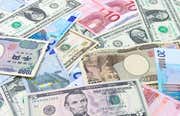Exchange-traded funds (ETFs) have registered phenomenal growth since the introduction in 1993 of the first ETF – the venerable S&P 500 ETF (SPY), units of which are known colloquially as “Spiders.” Nearly a quarter-century later, ETFs are likely to be found in most portfolios, from retail investors’ five-figure accounts to institutional money managers’ multi-billion dollar holdings. (Related: ETFs Vs. Index Funds: Quantifying The Differences)
The exponential growth of ETFs can be attributed to their many advantages (discussed in greater detail later in this publication) – such as their relatively lower cost, transparency, tax efficiency and liquidity. But their very popularity is causing some angst about the potential negative effects of such near-ubiquity. Are ETFs really as liquid as they appear to be? And can the price dislocations between ETFs and their underlying baskets of securities experienced during short-lived selloffs – such as the “Flash Crash” of May 2010, and August 2015 – portend anomalous behavior that could prolong a bear market?
Figure 1 shows the tremendous growth in ETFs and ETPs (Exchange-Traded Products) over the period from 2005 to 2017. Globally, assets have grown from approximately $500 billion in 600 ETFs in 2005, to more than $4 trillion in over 5,000 ETFs by September 2017. ETF assets are forecast to grow rapidly for the foreseeable future. Participants in a 2016 PwC survey of ETF sponsors and managers, and asset management firms said they expected global ETF assets to exceed $7 trillion by 2021.
Figure 1: Global ETF and ETP Growth

Source: ETFGI.com
Exchange-Traded Funds: Background
-
 Investing
InvestingA Look at the Growth of the ETF Industry
Explore the phenomenal growth of the ETF industry, and learn some of the principal reasons why ETFs are projected to continue growing at a rapid pace. -
 Investing
InvestingHow Big Is the Global ETF Market? (BLK, STT)
Discover why ETFs are growing much faster than mutual funds, and why some experts predict the ETF market will double by 2020. -
 Investing
InvestingETF Investing (SPY): Main Attractions
As the popularity of ETFs soar, here's a look at the main benefits of these investment vehicles. -
 Investing
InvestingThe Advantages of ETFs Compared to Index Funds
With the ongoing ETF boom, ETFs gain more variety and increased competition in the market leads to further investors' advantages compared to index funds. -
 Investing
Investing5 Reasons to Pick ETFs Over Mutual Funds
Discover five reasons why average investors and sophisticated hedge funds choose ETFs instead of mutual funds to meet their investment goals. -
 Investing
Investing11 ETF Flaws You Shouldn't Overlook
Despite their popularity, exchange-traded funds, or ETFs, have some drawbacks that investors should know about. -
 Investing
InvestingBlackRock: These Trends Will Drive ETF Growth
ETF assets could top $12 trillion in just a few years if these forecasts prove accurate. -
 Investing
Investing5 Signs It's Time to Dump Your ETF
You’ve bought into your favorite ETF, and it's been a great ride. When should you exit? Here are the top signals to exit an ETF position. -
 Investing
InvestingActively Managed ETFs: The New Mutual Funds?
Actively managed ETFs offer increased earnings, but are the cons worth the potential payoff?



